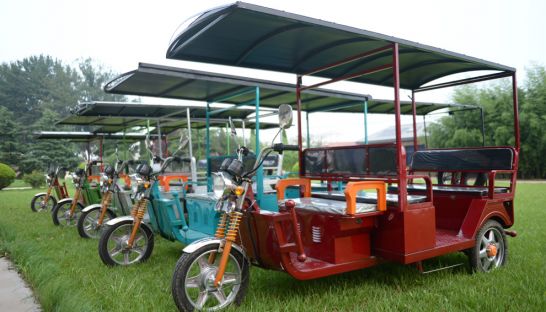‘SolarTuk’ coming in March
‘SolarTuk’ coming in March
Solar-powered tuk-tuks could be rolling off the assembly lines in Phnom Penh as early as March next year, allowing local tuk-tuk drivers a cost-effective and greener alternative to using petrol, according to the company manufacturing the vehicle.

Star 8, the Australia-based alternative energy firm behind the “SolarTuk”, is building a factory with a local partner in Dangkor district on the western outskirts of the city.
The firm’s managing director Jacob Maimon expects to hire 200 to 300 local staff once production goes live.
Maimon said his version of Southeast Asia’s ubiquitous motor-driven carriage will come in four different styles and cost between A$2,000 (US$1,880) and A$3,000.
Within the community of tuk-tuk drivers and transportation watchers, the impending arrival of the SolarTuk is generating mixed reactions.
Vorn Pao, president of the Independent Democracy of Informal Economy Association (IDIEA), a group that represents tuk-tuk drivers and other informal workers, said that for the SolarTuk to break into the market, it has to be strong enough to deal with the poor conditions of Cambodia’s streets and sturdy enough to handle heavy loads.
“Compared to the price of a new item currently used, the new tuk-tuk is similar in price but could provide greater benefits,” he said.
Poa estimates that there are about 8,000 tuk-tuks in Phnom Penh and some 5,000 in Siem Reap, two of Cambodia’s biggest tourist destinations.
The SolarTuk has sparked interest among Phnom Penh’s drivers who would normally pay close to $2,000 for a brand new petrol-powered motorbike and carriage. The SolarTuk combines the carriage and motorbike in one.
But they also had a wait-and-see attitude, a reluctance to sell off perfectly usable tuk-tuks for an untested product.
“When the first users show that it’s successful, others may follow suit,” said driver Chang Sophea, while sitting in his tuk-tuk yesterday waiting for passengers outside an apartment in Boeung Keng Kang 1 commune.
Driver Chan Sarom, parked near Brown Café on Street 51, estimates that about 20 per cent of his revenue is spent on fuel. He weighed the investment in the short term against savings over time.
“It is a high price for me, but I might be interested to pay that if it was useful for my business,” he said.
With solar panels on top, each vehicle has two batteries: one to power the engine and the other for storage that can be utilised as an alternative energy source in households.
Interest in the design has “gone off the scale already”, according to Star 8’s Maimon, who says inquiries about the product are coming in from the domestic market, India, Indonesia, Vietnam and as far afield as Nigeria.
phnompenh post













